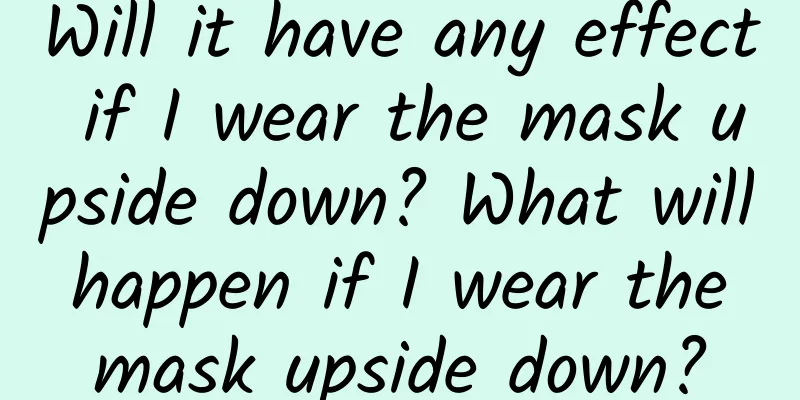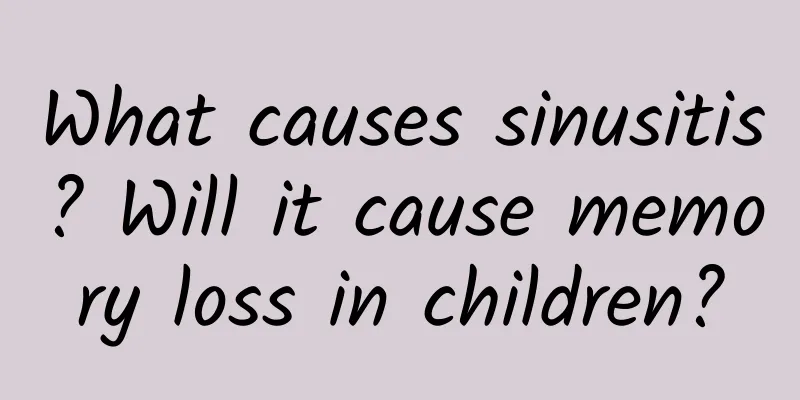Will it have any effect if I wear the mask upside down? What will happen if I wear the mask upside down?

|
We all know that masks are in short supply recently. They are mainly used for facial protection. They can prevent infection with the new coronavirus and play a certain protective role. Everyone should wear a mask when going out. So, will it have any effect if the mask is worn upside down? Let's take a closer look! Will it be harmful if I wear the mask upside down?Wearing a mask backwards may actually expose you to the virus. The mask is divided into three layers: the middle layer is sprayed fleece, which can absorb and isolate bacteria and viruses, and the innermost and outermost layers are non-woven fabrics. But these two layers of non-woven fabrics are different! The outer layer is hydrophobic, ensuring that droplets and other liquids will not be absorbed into the inside of the mask; the inner layer is hydrophilic, which can absorb exhaled water vapor, making people feel more comfortable. Wearing it backwards, are you trying to inhale other people's saliva? There is only one correct way to wear a mask: the light color faces inwards and the blue (dark color) faces outwards. The correct way to wear a maskThe first step is to check the logo on the mask packaging when you get the mask, confirm whether the mask type is suitable and whether it is within the validity period, and check whether the mask is clean and intact, and whether there is any damage, stains or odor; The second step is to determine whether the mask fits your face tightly and covers your nose, mouth and chin if it is your first time using a certain type of mask. Wearing an unsuitable mask will weaken the protective effect. Step 3: Wash your hands before wearing a mask and avoid touching the inner surface of the mask; Step 4: Put the nose clip of the mask on top, with the dark color facing outwards. Pull it up and down to cover the nose, mouth and chin. Pay attention to pinching the metal strip, shaping the nose clip according to the shape of the nose bridge, and check whether the edge of the mask fits the face. Tips: Used masks must never be squeezed by hands, as this will allow pathogens to penetrate into the inner layer of the mask, artificially increasing the chance of infection with pathogens. Try to avoid touching the mask while using it. Do not take it off and hang it in front of your neck or put it in your pocket for reuse. Do not touch the outside of the mask (the contaminated surface) when taking it off. Untie the lower strap first, then the upper strap, pinch the strap of the mask with your fingers and throw it into a trash can or medical waste container. Wash your hands immediately after taking off the mask. Under what circumstances can masks be reused?This depends on the specific situation: 1. Ordinary residents use disposable masks in places with lower risks. They can be reused as long as the masks are clean and structurally intact, especially the inner layer is not contaminated. After each use, they should be placed in a clean, dry and ventilated place in the room. 2. When taking public transportation, entering and leaving crowded public places, including entering shopping malls, elevators, and conference rooms, and going to ordinary medical institutions (except fever clinics), you can wear ordinary medical masks, that is, disposable medical masks. In this case, put the mask in a clean, dry, and ventilated place after returning home, and it can be reused. 3. For workers in crowded places, including those engaged in epidemic-related industries, administrative personnel, police, security guards, couriers, etc., it is recommended to wear medical surgical masks. In this case, the use time of the mask can be appropriately extended according to the actual situation. Generally speaking, if the mask is not obviously dirty or deformed, it does not need to be changed every four hours, but if the mask is dirty, deformed, damaged, or has an odor, it needs to be replaced in time. Which type of mask is better?Staff working in wards, ICUs, and observation rooms for treating patients with COVID-19, doctors and nurses in fever clinics of designated medical institutions in epidemic areas, and public health physicians conducting epidemiological investigations of confirmed and suspected cases are at high risk of exposure. It is recommended that they wear medical protective masks. When medical protective masks are in short supply, particulate protective masks that meet N95/KN95 or above standards can be used as a substitute. People with higher risk of exposure, such as medical staff working in the emergency department, public health physicians conducting epidemiological investigations on close contacts, and personnel testing environmental and biological samples related to the epidemic, are advised to wear particulate protection masks that meet N95/KN95 and above standards. Medical staff working in general outpatient clinics and wards; staff in relatively closed places such as hospitals, airports, railway stations, supermarkets, restaurants, etc.; people engaged in administrative management, police, security, express delivery and other personnel related to the epidemic, and those under home quarantine and living with them are all medium-risk exposed people and only need to wear medical surgical masks. The public in crowded areas such as supermarkets, shopping malls, transportation vehicles, elevators, patients in indoor office environments, medical institutions (except fever clinics), children in childcare institutions and students in schools who are engaged in concentrated learning and activities are at lower risk of exposure. It is recommended that they wear disposable medical masks, and children should use protective products with equivalent performance. People who engage in indoor activities at home and scattered residents are at low risk of exposure and do not need to wear masks at home; in well-ventilated and low-density places, non-medical masks such as cotton yarn, activated carbon and sponges also have a certain protective effect. |
Recommend
Vulva itching with white skin pictures
Female friends should pay attention if they exper...
After three months of exercise, my skin became better
Many girls reported that their skin became better...
Pregnant for one month and have sex several times
It's all impulse. During the period of pregna...
What is the reason for the light brown vaginal discharge?
Leucorrhea that is light brown must be a sign of ...
Can pregnant women eat salted eggs?
The diet of pregnant women needs to be taken seri...
Camellia oil, peony oil, Xanthoceras sorbifolia oil..., this article will introduce you to healthy woody edible oils
In the fast-paced modern life, scientific diet ha...
What are the treatments for uterine hypertrophy and endometrial thickening?
The uterus is a very important reproductive organ...
Panax notoginseng powder cured uterine fibroids
Many women will try every possible means to treat...
The benefits of eating Polygonum multiflorum for women
When it comes to Chinese herbal medicine, most pe...
Can I have sex during treatment of pelvic inflammatory disease?
For gynecological diseases such as pelvic inflamm...
What to do if uric acid is high? Remember to do "4 avoidances, 1 restriction, 5 encouragements"
Since the article "Diabetes Care: Eating rig...
Children curl up with abdominal pain, beware of acute mesenteric lymphadenitis
This is the 4383rd article of Da Yi Xiao Hu "...
Why does my period get delayed and cause chest pain?
The most common reason for delayed menstruation i...
What to do if you have anal pain after childbirth
Many women experience anal pain after giving birt...
Will having an abortion at the age of 17 lead to infertility?
In recent years, the age of women who have unexpe...









